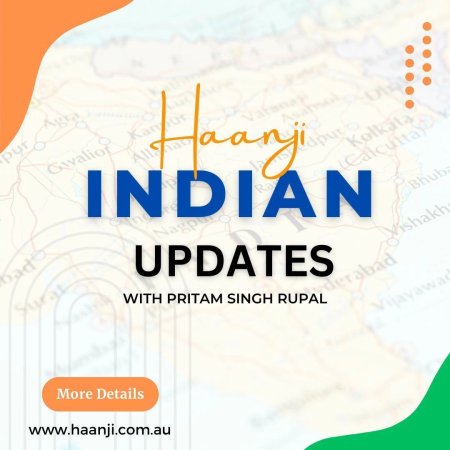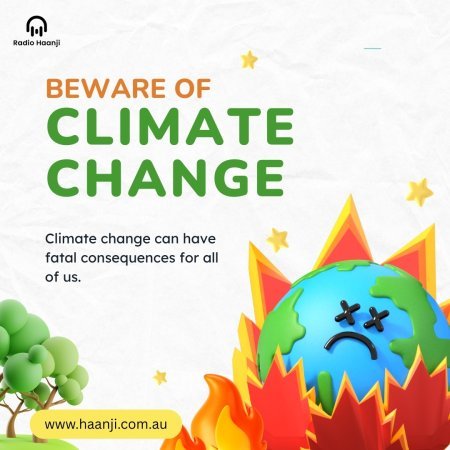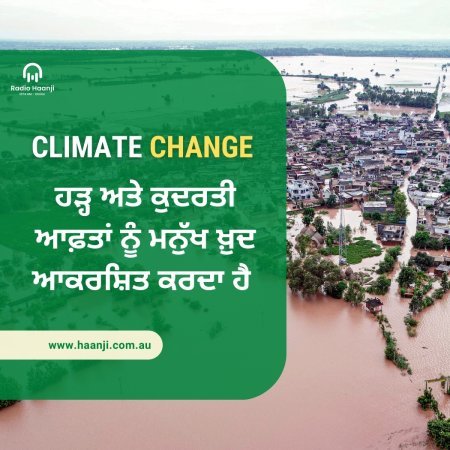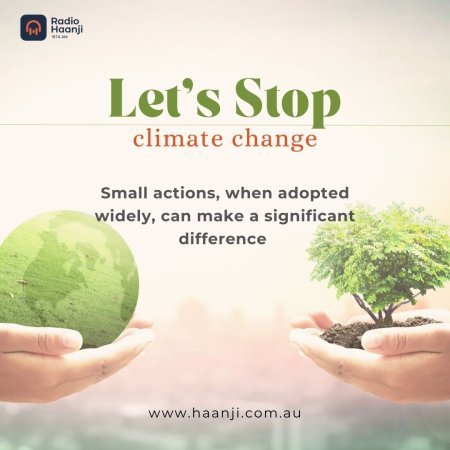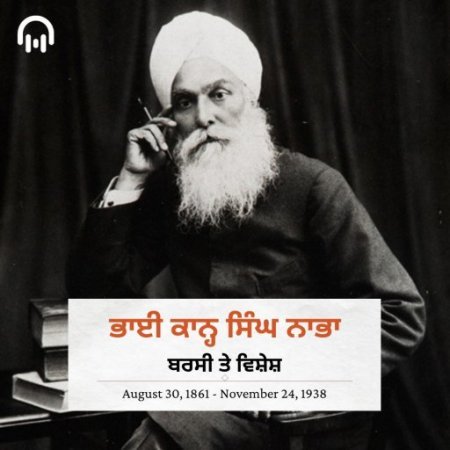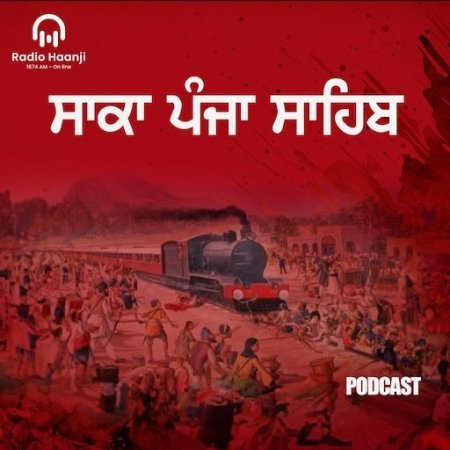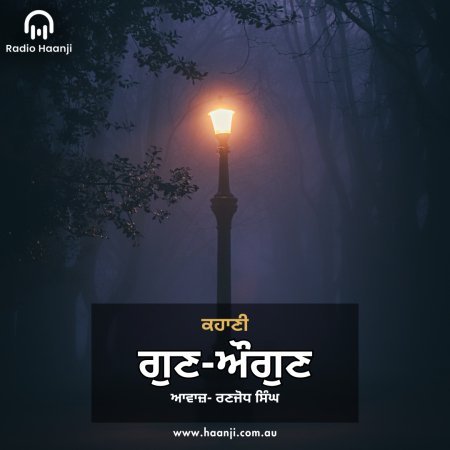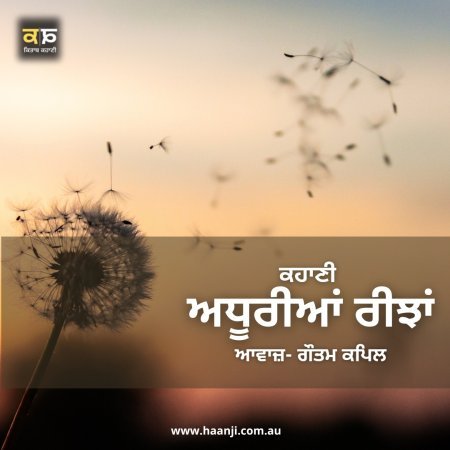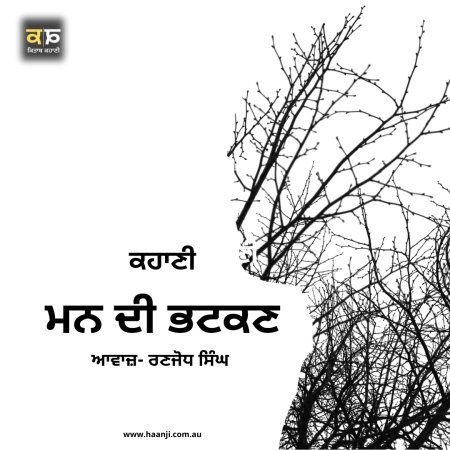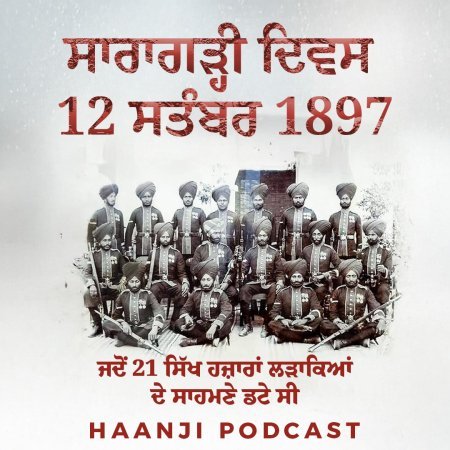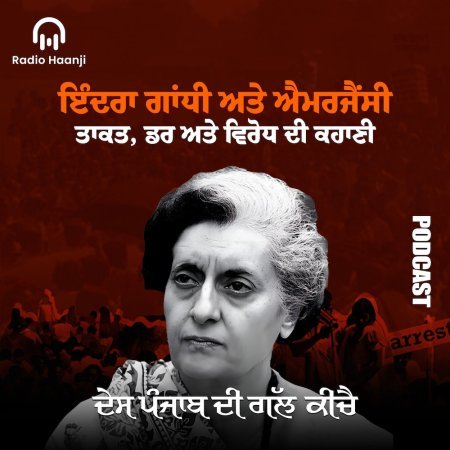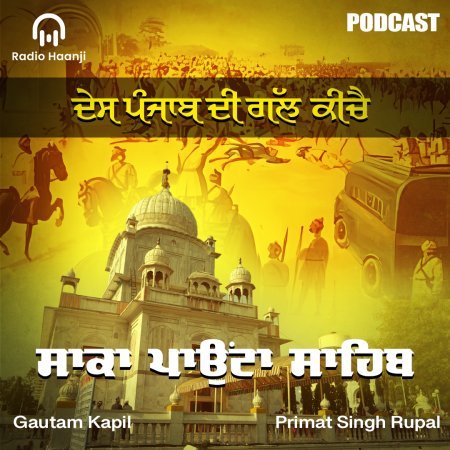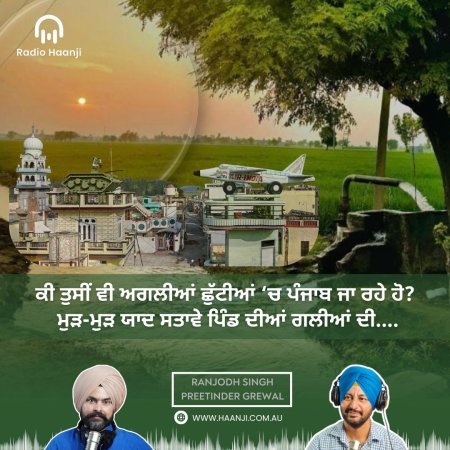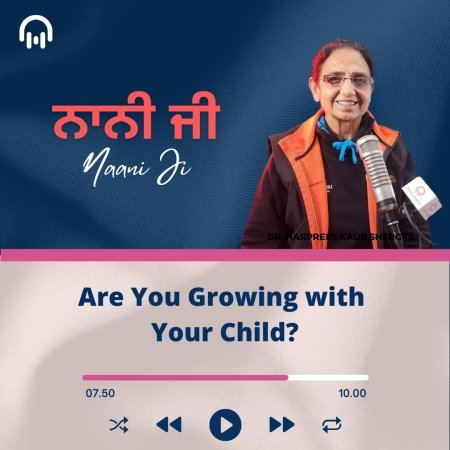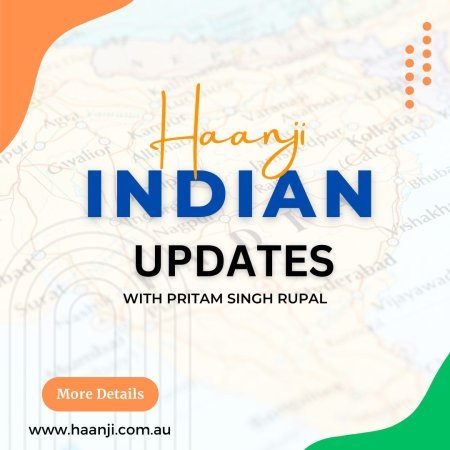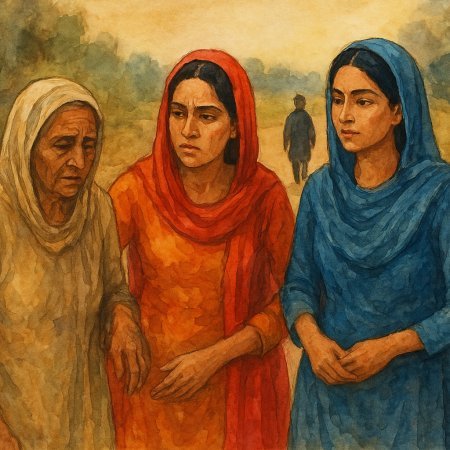ਸੁਪਰੀਮ ਕੋਰਟ ਨੇ ਪੰਜਾਬ ਦੀ ਪਾਣੀ ਵੰਡ ਦੀ ਅਪੀਲ ਰੱਦ ਕੀਤੀ
ਸੁਪਰੀਮ ਕੋਰਟ ਨੇ ਪੰਜਾਬ ਸਰਕਾਰ ਦੀ ਪਟੀਸ਼ਨ ’ਤੇ ਸੁਣਵਾਈ ਕਰਨ ਤੋਂ ਇਨਕਾਰ ਕਰ ਦਿੱਤਾ, ਜਿਸ ਵਿੱਚ ਹਰਿਆਣਾ ਨੂੰ 4,500 ਕਿਊਸਿਕ ਵਾਧੂ ਪਾਣੀ ਦੇਣ ਦੇ ਹਰਿਆਣਾ ਹਾਈ ਕੋਰਟ ਦੇ ਹੁਕਮ ਨੂੰ ਚੁਣੌਤੀ ਦਿੱਤੀ ਗਈ ਸੀ।

ਪੰਜਾਬ ਅਤੇ ਹਰਿਆਣਾ ਵਿਚਕਾਰ ਪਾਣੀ ਦੀ ਵੰਡ ਦਾ ਮੁੱਦਾ ਲੰਬੇ ਸਮੇਂ ਤੋਂ ਚਰਚਾ ਦਾ ਵਿਸ਼ਾ ਰਿਹਾ ਹੈ। ਸੁਪਰੀਮ ਕੋਰਟ ਦੇ ਤਾਜ਼ਾ ਫੈਸਲੇ ਨੇ ਇਸ ਵਿਵਾਦ ਨੂੰ ਹੋਰ ਗੰਭੀਰ ਕਰ ਦਿੱਤਾ ਹੈ, ਜਿਸ ਨਾਲ ਪੰਜਾਬ ਦੇ ਕਿਸਾਨਾਂ ਅਤੇ ਆਮ ਲੋਕਾਂ ਵਿੱਚ ਚਿੰਤਾ ਵਧ ਗਈ ਹੈ। ਇਸ ਲੇਖ ਵਿੱਚ, ਅਸੀਂ ਸੁਪਰੀਮ ਕੋਰਟ ਦੇ ਇਸ ਫੈਸਲੇ ਦੀਆਂ ਵਿਸਤ੍ਰਿਤ ਜਾਣਕਾਰੀਆਂ, ਪੰਜਾਬ-ਹਰਿਆਣਾ ਪਾਣੀ ਵਿਵਾਦ ਦੇ ਪਿਛੋਕੜ, ਅਤੇ ਇਸ ਦੇ ਪੰਜਾਬ ਦੇ ਲੋਕਾਂ ’ਤੇ ਪ੍ਰਭਾਵ ਬਾਰੇ ਚਰਚਾ ਕਰਾਂਗੇ। ਪੰਜਾਬ ਪਾਣੀ ਵਿਵਾਦ ਦੀਆਂ ਤਾਜ਼ਾ ਅੱਪਡੇਟਸ ਜਾਣਨ ਲਈ ਇਹ ਲੇਖ ਪੜ੍ਹੋ।
ਸੁਪਰੀਮ ਕੋਰਟ ਦਾ ਫੈਸਲਾ ਕੀ ਸੀ?
ਸੁਪਰੀਮ ਕੋਰਟ ਨੇ ਪੰਜਾਬ ਸਰਕਾਰ ਦੀ ਉਸ ਪਟੀਸ਼ਨ ’ਤੇ ਸੁਣਵਾਈ ਕਰਨ ਤੋਂ ਸਾਫ਼ ਇਨਕਾਰ ਕਰ ਦਿੱਤਾ, ਜਿਸ ਵਿੱਚ ਹਰਿਆਣਾ ਨੂੰ 4,500 ਕਿਊਸਿਕ ਵਾਧੂ ਪਾਣੀ ਦੇਣ ਦੇ ਹਰਿਆਣਾ ਹਾਈ ਕੋਰਟ ਦੇ ਹੁਕਮ ਨੂੰ ਚੁਣੌਤੀ ਦਿੱਤੀ ਗਈ ਸੀ। ਜਸਟਿਸ ਵਿਕਰਮ ਨਾਥ ਅਤੇ ਜਸਟਿਸ ਸੰਦੀਪ ਮਹਿਤਾ ਦੀ ਬੈਂਚ ਨੇ ਇਸ ਮਾਮਲੇ ’ਤੇ ਸੁਣਵਾਈ ਤੋਂ ਮਨ੍ਹਾ ਕਰ ਦਿੱਤਾ। ਪੰਜਾਬ ਦੀ ਤਰਫੋਂ ਸੀਨੀਅਰ ਵਕੀਲ ਅਭਿਸ਼ੇਕ ਸਿੰਘਵੀ ਨੇ ਅਦਾਲਤ ਵਿੱਚ ਪੱਖ ਰੱਖਿਆ। ਉਨ੍ਹਾਂ ਨੇ ਕਿਹਾ ਕਿ ਹਰਿਆਣਾ ਪਹਿਲਾਂ ਹੀ ਆਪਣੇ ਹਿੱਸੇ ਦਾ 100 ਫੀਸਦੀ ਤੋਂ ਵੱਧ ਪਾਣੀ ਲੈ ਰਿਹਾ ਹੈ। ਇਸ ਤੋਂ ਇਲਾਵਾ, ਪੰਜਾਬ ਨੇ ਮਨੁੱਖੀ ਆਧਾਰ ’ਤੇ ਹਰਿਆਣਾ ਨੂੰ 4,000 ਕਿਊਸਿਕ ਵਾਧੂ ਪਾਣੀ ਵੀ ਦਿੱਤਾ ਹੈ। ਸਿੰਘਵੀ ਨੇ ਇਹ ਵੀ ਜ਼ੋਰ ਦੇ ਕੇ ਕਿਹਾ ਕਿ ਇਹ ਮੁੱਦਾ ਪੰਜਾਬ ਅਤੇ ਹਰਿਆਣਾ ਦੋਹਾਂ ਸੂਬਿਆਂ ਲਈ ਬਹੁਤ ਭਾਵਨਾਤਮਕ ਮਹੱਤਤਾ ਵਾਲਾ ਹੈ।
ਹਰਿਆਣਾ ਹਾਈ ਕੋਰਟ ਨੇ ਪੰਜਾਬ ਨੂੰ 2 ਮਈ ਨੂੰ ਕੇਂਦਰੀ ਗ੍ਰਹਿ ਸਕੱਤਰ ਦੀ ਅਗਵਾਈ ਹੇਠ ਹੋਈ ਮੀਟਿੰਗ ਦੇ ਫੈਸਲੇ ਦੀ ਪਾਲਣਾ ਕਰਨ ਦੇ ਨਿਰਦੇਸ਼ ਦਿੱਤੇ ਸਨ। ਇਸ ਮੀਟਿੰਗ ਵਿੱਚ ਭਾਖੜਾ ਬਿਆਸ ਮੈਨੇਜਮੈਂਟ ਬੋਰਡ (ਬੀਬੀਐਮਬੀ) ਨੇ ਸਾਰੇ ਪੱਖਾਂ ਨੂੰ ਸੁਣਨ ਤੋਂ ਬਾਅਦ ਫੈਸਲਾ ਲਿਆ ਸੀ। ਸੌਲੀਸਿਟਰ ਜਨਰਲ ਤੁਸ਼ਾਰ ਮਹਿਤਾ, ਜੋ ਬੀਬੀਐਮਬੀ ਦੀ ਤਰਫੋਂ ਅਦਾਲਤ ਵਿੱਚ ਹਾਜ਼ਰ ਹੋਏ, ਨੇ ਦੱਸਿਆ ਕਿ ਬੋਰਡ ਦਾ ਫੈਸਲਾ ਸਾਰੇ ਪੱਖਾਂ ਦੀ ਸਹਿਮਤੀ ਨਾਲ ਲਿਆ ਗਿਆ ਸੀ।
ਪੰਜਾਬ-ਹਰਿਆਣਾ ਪਾਣੀ ਵਿਵਾਦ ਦਾ ਪਿਛੋਕੜ
ਪੰਜਾਬ ਅਤੇ ਹਰਿਆਣਾ ਵਿਚਕਾਰ ਪਾਣੀ ਦੀ ਵੰਡ ਦਾ ਮੁੱਦਾ ਦਹਾਕਿਆਂ ਪੁਰਾਣਾ ਹੈ। ਸਤਲੁਜ-ਯਮੁਨਾ ਲਿੰਕ ਨਹਿਰ (ਐਸਵਾਈਐਲ) ਦੀ ਉਸਾਰੀ ਨੂੰ ਲੈ ਕੇ ਦੋਵੇਂ ਸੂਬਿਆਂ ਵਿੱਚ ਅਕਸਰ ਤਣਾਅ ਵਧਦਾ ਹੈ। ਪੰਜਾਬ ਦਾ ਮੰਨਣਾ ਹੈ ਕਿ ਉਸ ਕੋਲ ਪਹਿਲਾਂ ਹੀ ਸੀਮਤ ਪਾਣੀ ਦੇ ਸਰੋਤ ਹਨ, ਅਤੇ ਵਾਧੂ ਪਾਣੀ ਹਰਿਆਣਾ ਨੂੰ ਦੇਣ ਨਾਲ ਸੂਬੇ ਦੇ ਕਿਸਾਨਾਂ ਨੂੰ ਸਿੰਚਾਈ ਲਈ ਪਾਣੀ ਦੀ ਕਮੀ ਦਾ ਸਾਹਮਣਾ ਕਰਨਾ ਪਵੇਗਾ। ਦੂਜੇ ਪਾਸੇ, ਹਰਿਆਣਾ ਦਾ ਕਹਿਣਾ ਹੈ ਕਿ ਉਸ ਨੂੰ ਆਪਣੇ ਹਿੱਸੇ ਦਾ ਪਾਣੀ ਪੂਰਾ ਨਹੀਂ ਮਿਲ ਰਿਹਾ, ਜਿਸ ਕਾਰਨ ਉਸ ਦੇ ਕਿਸਾਨਾਂ ਨੂੰ ਮੁਸ਼ਕਲਾਂ ਹੋ ਰਹੀਆਂ ਹਨ।
ਇਸ ਵਿਵਾਦ ਦੀ ਸ਼ੁਰੂਆਤ 1966 ਵਿੱਚ ਹਰਿਆਣਾ ਦੇ ਪੰਜਾਬ ਤੋਂ ਵੱਖ ਹੋਣ ਨਾਲ ਸ਼ੁਰੂ ਹੋਈ। ਉਦੋਂ ਤੋਂ ਹੀ ਦੋਵੇਂ ਸੂਬੇ ਪਾਣੀ ਦੀ ਵੰਡ ਨੂੰ ਲੈ ਕੇ ਅਦਾਲਤਾਂ ਅਤੇ ਸਿਆਸੀ ਮੰਚਾਂ ’ਤੇ ਆਹਮੋ-ਸਾਹਮਣੇ ਹੁੰਦੇ ਰਹੇ ਹਨ। ਪੰਜਾਬ ਪਾਣੀ ਵੰਡ ਦੇ ਮੁੱਦੇ ਨੇ ਸੂਬੇ ਦੀ ਸਿਆਸਤ ਨੂੰ ਵੀ ਗਰਮਾਇਆ ਹੋਇਆ ਹੈ, ਅਤੇ ਕਈ ਵਾਰ ਇਸ ਨੇ ਸਮਾਜਕ ਤਣਾਅ ਨੂੰ ਵੀ ਜਨਮ ਦਿੱਤਾ ਹੈ।
ਸੁਪਰੀਮ ਕੋਰਟ ਦੇ ਫੈਸਲੇ ਦਾ ਪੰਜਾਬ ’ਤੇ ਪ੍ਰਭਾਵ ਕੀ ਹੋਵੇਗਾ?
ਪੰਜਾਬ ਦੇ ਕਿਸਾਨਾਂ ਲਈ ਮੁਸ਼ਕਲਾਂ
ਪੰਜਾਬ ਇੱਕ ਖੇਤੀਬਾੜੀ ਪ੍ਰਧਾਨ ਸੂਬਾ ਹੈ, ਜਿੱਥੇ ਸਿੰਚਾਈ ਲਈ ਪਾਣੀ ਦੀ ਬਹੁਤ ਜ਼ਰੂਰਤ ਹੈ। ਸੁਪਰੀਮ ਕੋਰਟ ਦੇ ਇਸ ਫੈਸਲੇ ਨਾਲ ਪੰਜਾਬ ਦੇ ਕਿਸਾਨਾਂ ਨੂੰ ਪਾਣੀ ਦੀ ਕਮੀ ਦਾ ਸਾਹਮਣਾ ਕਰਨਾ ਪੈ ਸਕਦਾ ਹੈ। ਜੇਕਰ ਪੰਜਾਬ ਨੂੰ ਹਰਿਆਣਾ ਨੂੰ ਵਾਧੂ ਪਾਣੀ ਦੇਣਾ ਪਿਆ, ਤਾਂ ਸੂਬੇ ਦੇ ਸਤਲੁਜ ਅਤੇ ਬਿਆਸ ਦਰਿਆਵਾਂ ’ਤੇ ਨਿਰਭਰ ਜ਼ਿਲ੍ਹਿਆਂ ਵਿੱਚ ਸਿੰਚਾਈ ਦੀ ਸਮੱਸਿਆ ਵਧ ਸਕਦੀ ਹੈ। ਇਸ ਨਾਲ ਕਿਸਾਨ ਅੰਦੋਲਨ ਦੀ ਸੰਭਾਵਨਾ ਵੀ ਵਧ ਸਕਦੀ ਹੈ, ਕਿਉਂਕਿ ਪੰਜਾਬ ਦੇ ਕਿਸਾਨ ਪਹਿਲਾਂ ਹੀ ਪਾਣੀ ਦੀ ਵੰਡ ਨੂੰ ਲੈ ਕੇ ਸੰਘਰਸ਼ ਕਰ ਰਹੇ ਹਨ।
ਸਿਆਸੀ ਪ੍ਰਭਾਵ
ਇਹ ਮੁੱਦਾ ਪੰਜਾਬ ਦੀ ਸਿਆਸਤ ਵਿੱਚ ਵੀ ਵੱਡਾ ਰੋਲ ਅਦਾ ਕਰ ਸਕਦਾ ਹੈ। ਪੰਜਾਬ ਦੀਆਂ ਸਿਆਸੀ ਪਾਰਟੀਆਂ ਇਸ ਮੁੱਦੇ ਨੂੰ ਚੁੱਕ ਕੇ ਸਰਕਾਰ ’ਤੇ ਦਬਾਅ ਪਾ ਸਕਦੀਆਂ ਹਨ। ਸਤਲੁਜ-ਯਮੁਨਾ ਲਿੰਕ ਨਹਿਰ ਦਾ ਵਿਵਾਦ ਪਹਿਲਾਂ ਹੀ ਸੂਬੇ ਦੀ ਸਿਆਸਤ ਵਿੱਚ ਗੰਭੀਰ ਮੁੱਦਾ ਰਿਹਾ ਹੈ, ਅਤੇ ਸੁਪਰੀਮ ਕੋਰਟ ਦਾ ਫੈਸਲਾ ਇਸ ਨੂੰ ਹੋਰ ਗਰਮਾ ਸਕਦਾ ਹੈ।
ਸਵਾਲ: ਸੁਪਰੀਮ ਕੋਰਟ ਨੇ ਪੰਜਾਬ ਦੀ ਪਟੀਸ਼ਨ ਕਿਉਂ ਨਹੀਂ ਸੁਣੀ?
ਸੁਪਰੀਮ ਕੋਰਟ ਨੇ ਪੰਜਾਬ ਦੀ ਪਟੀਸ਼ਨ ’ਤੇ ਸੁਣਵਾਈ ਤੋਂ ਇਨਕਾਰ ਕਰਨ ਦਾ ਕੋਈ ਸਪੱਸ਼ਟ ਕਾਰਨ ਨਹੀਂ ਦੱਸਿਆ। ਪਰ, ਅਦਾਲਤ ਨੇ ਸ਼ਾਇਦ ਇਹ ਸਮਝਿਆ ਕਿ ਹਰਿਆਣਾ ਹਾਈ ਕੋਰਟ ਦਾ ਫੈਸਲਾ ਸਹੀ ਸੀ, ਅਤੇ ਬੀਬੀਐਮਬੀ ਦੇ 2 ਮਈ ਦੇ ਫੈਸਲੇ ਨੂੰ ਲਾਗੂ ਕਰਨ ਦੀ ਜ਼ਰੂਰਤ ਸੀ। ਸੌਲੀਸਿਟਰ ਜਨਰਲ ਤੁਸ਼ਾਰ ਮਹਿਤਾ ਨੇ ਅਦਾਲਤ ਨੂੰ ਦੱਸਿਆ ਕਿ ਬੋਰਡ ਨੇ ਸਾਰੇ ਪੱਖਾਂ ਨੂੰ ਸੁਣਨ ਤੋਂ ਬਾਅਦ ਹੀ ਇਹ ਫੈਸਲਾ ਲਿਆ ਸੀ। ਇਸ ਲਈ, ਸੁਪਰੀਮ ਕੋਰਟ ਨੇ ਸ਼ਾਇਦ ਇਸ ਮਾਮਲੇ ਵਿੱਚ ਦਖਲਅੰਦਾਜ਼ੀ ਕਰਨ ਦੀ ਜ਼ਰੂਰਤ ਨਹੀਂ ਸਮਝੀ।
ਸਵਾਲ: ਪੰਜਾਬ ਦੇ ਕਿਸਾਨ ਇਸ ਫੈਸਲੇ ਦਾ ਵਿਰੋਧ ਕਿਉਂ ਕਰ ਰਹੇ ਹਨ?
ਪੰਜਾਬ ਦੇ ਕਿਸਾਨ ਇਸ ਫੈਸਲੇ ਦਾ ਵਿਰੋਧ ਕਰ ਰਹੇ ਹਨ ਕਿਉਂਕਿ ਉਨ੍ਹਾਂ ਨੂੰ ਡਰ ਹੈ ਕਿ ਵਾਧੂ ਪਾਣੀ ਹਰਿਆਣਾ ਨੂੰ ਦੇਣ ਨਾਲ ਸੂਬੇ ਵਿੱਚ ਸਿੰਚਾਈ ਲਈ ਪਾਣੀ ਦੀ ਕਮੀ ਹੋ ਜਾਵੇਗੀ। ਪੰਜਾਬ ਦੀ ਖੇਤੀਬਾੜੀ ਸਤਲੁਜ ਅਤੇ ਬਿਆਸ ਦਰਿਆਵਾਂ ’ਤੇ ਨਿਰਭਰ ਹੈ, ਅਤੇ ਪਾਣੀ ਦੀ ਕਮੀ ਨਾਲ ਫਸਲਾਂ ਦੀ ਪੈਦਾਵਾਰ ’ਤੇ ਅਸਰ ਪੈ ਸਕਦਾ ਹੈ। ਕਿਸਾਨ ਅੰਦੋਲਨ ਪੰਜਾਬ ਵਿੱਚ ਪਹਿਲਾਂ ਹੀ ਇਸ ਮੁੱਦੇ ਨੂੰ ਲੈ ਕੇ ਸਰਗਰਮ ਹਨ, ਅਤੇ ਇਹ ਫੈਸਲਾ ਉਨ੍ਹਾਂ ਦੀਆਂ ਮੁਸ਼ਕਲਾਂ ਨੂੰ ਹੋਰ ਵਧਾ ਸਕਦਾ ਹੈ।
ਪੰਜਾਬ ਸਰਕਾਰ ਅੱਗੇ ਕੀ ਕਰ ਸਕਦੀ ਹੈ?
ਪੰਜਾਬ ਸਰਕਾਰ ਕੋਲ ਹੁਣ ਕੁਝ ਸੀਮਤ ਵਿਕਲਪ ਹਨ। ਉਹ ਸੁਪਰੀਮ ਕੋਰਟ ਵਿੱਚ ਰੀਵਿਊ ਪਟੀਸ਼ਨ ਦਾਇਰ ਕਰ ਸਕਦੀ ਹੈ ਜਾਂ ਫਿਰ ਕੇਂਦਰ ਸਰਕਾਰ ਨਾਲ ਗੱਲਬਾਤ ਕਰਕੇ ਇਸ ਮੁੱਦੇ ਦਾ ਕੋਈ ਹੱਲ ਕੱਢ ਸਕਦੀ ਹੈ। ਇਸ ਤੋਂ ਇਲਾਵਾ, ਸੂਬਾ ਸਰਕਾਰ ਬੀਬੀਐਮਬੀ ਨਾਲ ਵੀ ਮੀਟਿੰਗ ਕਰਕੇ ਪਾਣੀ ਦੀ ਵੰਡ ਦੇ ਮੁੱਦੇ ’ਤੇ ਸਹਿਮਤੀ ਬਣਾਉਣ ਦੀ ਕੋਸ਼ਿਸ਼ ਕਰ ਸਕਦੀ ਹੈ। ਪਰ, ਇਸ ਦੌਰਾਨ ਪੰਜਾਬ ਦੇ ਕਿਸਾਨਾਂ ਅਤੇ ਸਿਆਸੀ ਪਾਰਟੀਆਂ ਵੱਲੋਂ ਵਿਰੋਧ ਦੀ ਸੰਭਾਵਨਾ ਵੀ ਬਣੀ ਹੋਈ ਹੈ।
Introduction
The Punjab water dispute has been a long-standing issue between Punjab and Haryana, stirring emotions and debates for decades. The Supreme Court's recent decision to reject Punjab’s petition has intensified the Punjab-Haryana conflict, raising concerns among Punjab’s farmers and residents. This article explores the Supreme Court’s ruling, the background of the water allocation issue, and its potential impact on Punjab’s agriculture and politics. Stay informed about the Punjab water dispute and its implications.
What Was the Supreme Court’s Decision?
The Supreme Court refused to hear Punjab’s petition challenging the Haryana High Court’s order to provide 4,500 cusecs of additional water to Haryana. Justices Vikram Nath and Sandeep Mehta presided over the case, dismissing Punjab’s plea. Senior advocate Abhishek Singhvi, representing Punjab, argued that Haryana is already receiving more than its allocated share of water. He also noted that Punjab had provided 4,000 cusecs of extra water to Haryana on humanitarian grounds. Singhvi emphasized that the Punjab water dispute holds deep emotional significance for both states.
The Haryana High Court had directed Punjab to comply with the decision made in a meeting on May 2, chaired by the Union Home Secretary. The Bhakra Beas Management Board (BBMB) made this decision after consulting all parties. Solicitor General Tushar Mehta, representing BBMB, informed the court that the board’s decision was reached through mutual agreement.
Background of the Punjab-Haryana Water Dispute
The Punjab-Haryana conflict over water allocation dates back to 1966, when Haryana was carved out of Punjab. The Sutlej-Yamuna Link (SYL) canal has been a major point of contention, with Punjab arguing that its limited water resources cannot support additional sharing. Punjab’s farmers rely heavily on the Sutlej and Beas rivers for irrigation, and further water scarcity could severely impact crop production. Meanwhile, Haryana claims it is not receiving its fair share, affecting its farmers.
The Punjab water dispute has fueled political and social tensions, with protests and legal battles shaping the discourse. The SYL canal issue remains a sensitive topic, often influencing Punjab’s political landscape and sparking farmer protests.
What Will Be the Impact on Punjab?
Challenges for Punjab’s Farmers
Punjab is an agriculture-driven state, heavily dependent on irrigation from the Sutlej and Beas rivers. The Supreme Court’s decision could lead to water scarcity, affecting farmers in districts reliant on these rivers. If Punjab is forced to provide additional water to Haryana, it may struggle to meet its own irrigation needs, potentially reducing crop yields. This could trigger farmer protests, as Punjab’s agricultural community has long opposed the SYL canal and water sharing with Haryana.
Political Implications
The Punjab water dispute is likely to have significant political repercussions. Political parties in Punjab may use this issue to rally support and pressure the government. The SYL canal controversy has historically been a major political issue, and the Supreme Court’s ruling could further escalate tensions.
FAQ: Why Did the Supreme Court Refuse Punjab’s Petition?
The Supreme Court did not provide a detailed reason for refusing Punjab’s petition. However, it likely considered the Haryana High Court’s order and the BBMB’s May 2 decision to be fair and binding. Solicitor General Tushar Mehta stated that the BBMB’s decision was made after hearing all parties, suggesting the court saw no need to intervene in the water allocation process.
FAQ: Why Are Punjab’s Farmers Opposing This Decision?
Punjab’s farmers fear that sharing additional water with Haryana will lead to water scarcity for irrigation. Punjab’s agriculture depends on the Sutlej and Beas rivers, and any reduction in water availability could harm crop production. Farmer protests have historically been strong on this issue, and the Supreme Court’s decision may intensify their agitation.
What Can Punjab’s Government Do Next?
Punjab’s government has limited options. It could file a review petition in the Supreme Court or engage in discussions with the central government to find a resolution. Additionally, the state could negotiate with the BBMB to revisit the water allocation agreement. However, the decision may lead to protests from farmers and political parties in Punjab.
Summary
The Supreme Court rejected Punjab’s petition challenging the Haryana High Court’s order to provide 4,500 cusecs of additional water to Haryana. This decision is part of the long-standing Punjab-Haryana conflict over water allocation. Punjab argues it has already provided extra water to Haryana and fears further sharing will cause water scarcity for its farmers. The ruling may lead to political and social tensions in Punjab, with potential farmer protests on the horizon.
What's Your Reaction?










